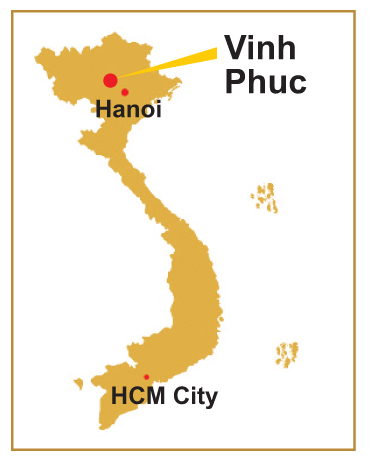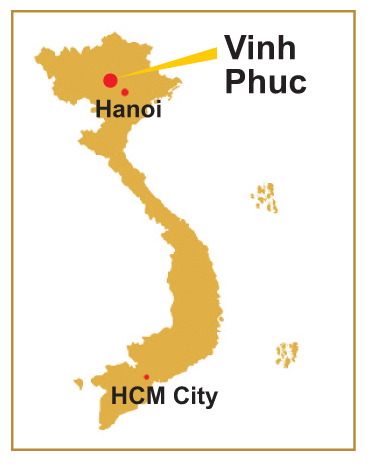(No.5, Vol.8,Oct-Nov Vietnam Heritage Magazine)



The special thing about Huong Canh is its blue clay, the raw material used to make its famous products. This clay is found in the swampy areas, 3-10m below the ground.
The advantage of this blue clay is that it is very smooth, pliant and sleek, so the baked products look like they are already enameled. This clay makes Huong Canh ceramics superior in quality, waterproof, and opaque.
We had a chance to talk to Mr Tran Van Hai, an artisan who has been making ceramics at Huong Canh for almost 50 years. Mr Hai shares with us, ‘Our blue clay has a shrinking coefficient of 26-28 per cent, which is very high. Other clays only have it at 11 per cent on average, which is unsatisfactory. Only highly shrinking, highly viscid clay makes high quality ceramics.
According to Mr Hai, Huong Canh ceramics quality shows even in its color and sound. Because of the fabric of the blue clay, Huong Canh ceramics make a metallic clanking when stroked.
Moreover, the ceramic products manage to retain the wild quality of the clay, rough and strong, which gives it a unique appeal compared to the ceramics made elsewhere. Remarkably, Huong Canh ceramics, though neither colored nor enameled are no less eye catching. Unglazed, it is reddish brown. Glazed, it is bluish black.
According to the sculptor Thai Nhat Minh, the blue and the black colors of Huong Canh ceramics only appear during the baking, a pleasant surprise for the creator. The surface of Huong Canh pottery is somewhat rough, but that is part of the appeal too. The artisans of this land maximize design simplicity, removing all excess, keeping only the essence of what makes people recognize and love Huong Canh pottery and ceramics.
Baking is the last stage of making pottery and ceramic products. The arrangement inside the kiln and fire control are keys. Because a kiln has only one door, the worker has to be keenly aware of the time and temperature to make sure of the best quality of the final products. A small mistake and even highly skilled workers may spoil a whole batch.
Those are lifelong, hard-earned experiences of Mr Hai, ‘The worker has to feel the kiln sharply all the time.’ He added, ‘We go gradually from low temperatures, reaching 500o after 28 hours. In has to add 350o more within 6 hours to reach 850o. Finally, within the last 2 hours, it has to heat up 400-450o more for the products to ripen. The fire always has to remain glaring.’
Pottery trade is quite tricky sometimes, because in the other crafts one can check and mend a product at any time but here one can’t check the products and make any mending until the fire in the kiln is out. During the whole baking process, the worker has to rely completely on their own experience and instincts to decide on the situation and quality of the products being baked.
Text by Dung Nguyen-Minh Phuong;
Photos by Ngo Huy Tinh

